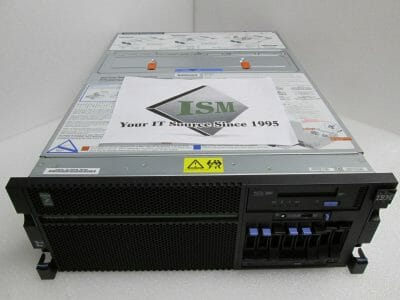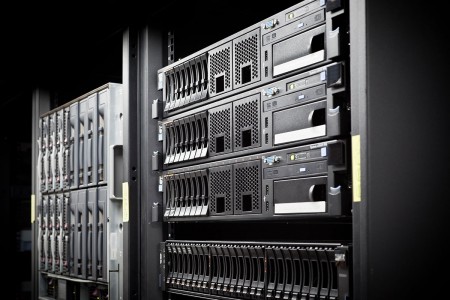Interesting news here out of IBM. They have licensed a Chinese manufacturer to be able to make their own version of the forthcoming IBM Power8 Chip. Very interesting development for the market and it’ll be interesting to see how this changes the IBM Power landscape: http://www.enterprisetech.com/2014/01/21/chinese-startup-make-power8-server-chips/
IBM has added another member to its OpenPower Consortium, which seeks to expand the use of Power processors in commercial systems. The Chinese government has made no secret that it wants to have an indigenous chip design and manufacturing business, and the newly formed Suzhou PowerCore aims to be one of the players in the fledgling Chinese chip market – and one that specializes on Power chips.
The details of the licensing agreement between the OpenPower Consortium, which is controlled by IBM at the moment, and Suzhou PowerCore are still being hammered out.
The OpenPower Consortium was founded in August last year with the idea of opening up Power chip technology much as ARM Holdings does for its ARM chip designs. Thus far, search engine giant Google, graphics chip maker Nvidia, networking and switch chip maker Mellanox Technologies, and motherboard maker Tyan have joined the effort. In December, the consortium just got its bylaws and governance rules together and had its first membership meeting.
Brad McCredie, vice president of Power Systems development within IBM’s Systems and Technology Group, tells EnterpriseTech that the arrangement with the OpenPower Consortium gives Suzhou PowerCore a license to the forthcoming Power8 processor, and will allow the startup to tweak the design as it sees fit for its customers as well as get the chips made in other foundries as it sees fit.
Initially, Suzhou PowerCore will make modest changes to the Power8 chip and will use IBM’s chip plant in East Fishkill, New York to manufacture its own variants of the chips. The timeline for such modifications is unclear, but McCredie said that, generally speaking, it can take two years or more to design a chip and get them coming off the production line. Presumably it will not take that long for Suzhou PowerCore to get its first iteration of Power8 out the door, particularly given that IBM will have worked the kinks out of its 22 nanometer processes as it rolls out its own Power8 chips sometime around the middle of the year. The chip development teams of Suzhou PowerCore and IBM are working on the timelines and roadmaps for the Chinese Power chip right now.
The Chinese Academy of Sciences has six different chip projects that it has help cultivate in the past decade in the country. The “Loongson” variant of the MIPS processor, which is aimed at servers and high performance computing clusters, is one chip China is working on, as is a clone of the OpenSparc processor that was open sourced by Sun Microsystems before it was acquired by Oracle. This latter chip, named “FeiTeng,” has been used as adjunct processors in service nodes in the Tianhe-1A massively parallel supercomputer. The Loongson chips are in their third generation of development and are expected to appear in servers sometime this year.
So why would China be interested in a Power chip? “China is very large, and it has the resources to place more than one bet,” explains McCredie. “In the conversations that we are having with them, it is clearly much more pointed at commercial uses, whereas the activity we have seen thus far is much more pointed at scientific computing. This is going after big data, analytics, and large Web 2.0 datacenters.”
The initial target markets for these PowerCore processors are in banking, communications, retail, and transportation – markets where IBM has made good money selling its own Power Systems machines for the past several years. Suzhou PowerCore expects to see its Power variants in server, storage, and networking gear eventually.
Suzhou PowerCore is putting together the first chip development team that is working in conjunction with the OpenPower Consortium. It will probably not be the last such team if IBM’s licensing terms are flexible and affordable. Suzhou PowerCore is backed by Jiangsu Province and is located in the Suzhou National New & Hi-Tech Industrial Development Zone that is about 30 miles west of Shanghai. The Research Institute of Jiangsu Industrial Technology is given the task of building an ecosystem dedicated to Power software and hardware across China.
Incidentally, Suzhou PowerCore is a sister company to China Core Technology, or C*Core for short, which is a licensee of the Freescale Semiconductor M-Core and IBM PowerPC instruction sets. C*Core licensed the PowerPC instruction set from IBM in 2010, and its C8000 and C9000 chips are aimed at the same embedded markets as the ARM Cortex-A8 and Cortex-A9 designs. As of the end of 2012, C*Core had more than 40 different system-on-chip designs and had shipped more than 70 million chips for a variety of embedded applications, including digital TVs, communication gear, and auto systems.
The Power8 chip from IBM is expected sometime around the middle of this year. It has twelve cores and eight threads per core, which is 50 percent more cores than the current Power7+ chip and twice as many threads per core. Running at 4 GHz, the Power8 chip is expected to deliver roughly 2.5 times the performance of a Power7+ chip on a wide variety of commercial and technical workloads. The Power8 chip has 96 MB of L3 cache on the die and 128 MB of L4 cache implemented on its memory buffer controllers, and has 230 GB/sec of sustained memory bandwidth and 48 GB/sec of peak I/O bandwidth, which is more than twice that offered by the Power7+ chip.
It will be interesting to see what tweaks Suzhou PowerCore makes to this beast.








![lego-star-wars-games-to-play-on-computer-1oli8qnz[1]](https://patentlyo.com/media/2015/02/lego-star-wars-games-to-play-on-computer-1oli8qnz1.jpg)





